Sugar VS Sweeteners
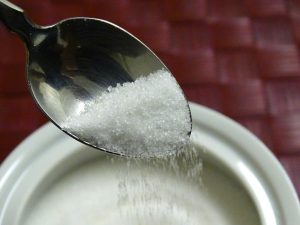 Which is better for you in the contest of sugar VS sweeteners. While artificial sweeteners have no or lower caloric value, they were voted the worse sweetener by Cleveland Clinic dietitians. That’s because they don’t satisfy the hunger for sugar, plus several other factors. Artificial sweeteners are better for you than sugar if you’re diabetic or prediabetic, since they don’t cause a spike in your blood sugar. However, consumed too frequently, they also are associated with insulin resistance, changes in gut bacteria and increased fat storage. Some, namely aspartame, has been shown to increase the risk of cancer in three separate animal studies, according to the dietitians.
Which is better for you in the contest of sugar VS sweeteners. While artificial sweeteners have no or lower caloric value, they were voted the worse sweetener by Cleveland Clinic dietitians. That’s because they don’t satisfy the hunger for sugar, plus several other factors. Artificial sweeteners are better for you than sugar if you’re diabetic or prediabetic, since they don’t cause a spike in your blood sugar. However, consumed too frequently, they also are associated with insulin resistance, changes in gut bacteria and increased fat storage. Some, namely aspartame, has been shown to increase the risk of cancer in three separate animal studies, according to the dietitians.
So sugar wins the contest? Not quite!
Table sugar produces inflammation in the body. While it has substantial calories, it has no benefits nutritionally. You can get addicted to sugar and before you know it, you’re consuming more and more to get the sugar high. Sugar is in hundreds of foods, from ketchup to “healthy” granola bars. One can of soda contains as much sugar as the average man should have in a day and more than the average woman should have to remain healthy.
Sugar consumption could lead to heart problems.
At one time fat was blamed for coronary problems, but that was because of a study funded by the sugar industry. Since then, much has been learned and it seems that sugar is the real culprit. One 15-year study showed that people whose diet was 25% or more were twice as likely to die from heart problems than people whose diet was 10% or less. That’s just added sugar, not sugar found in food.
Stevia is a sweetener that’s natural.
Stevia is a natural sweetener that’s between 200 and 300 times sweeter than ordinary sugar. The negative word on stevia is that it dulls your taste buds, so you tend to look for the same sweetness in other foods. That means you’ll eat food that’s sweeter and sweeter—contains more sugar. Stevia is a plant and the sweetener is made from the leaves, so it’s natural. It contains no calories.
- The most unhealthy sweetener is high fructose cornsyrup—HFC. It doesn’t stimulate the production of leptin, which tells your body you’re full. Therefore, you tend to continue to eat well past the point of satiation. Even worse, you’ll find this high calorie, low cost sugar substitute in almost everything.
- The top rated sweetener by the Cleveland Clinic dietitians was fresh or frozen fruit to sweeten food and drink.
- Raw honey is one alternative. While it does contain calories, as sugar does, it also comes with many health benefits and triggers fullness.
- Maple syrup—real maple syrup, not the maple flavored syrup—is also a healthy option. Like honey it has health benefits such as antioxidants.
 13609 Central Ave, Ste E Chino, CA 91710
13609 Central Ave, Ste E Chino, CA 91710

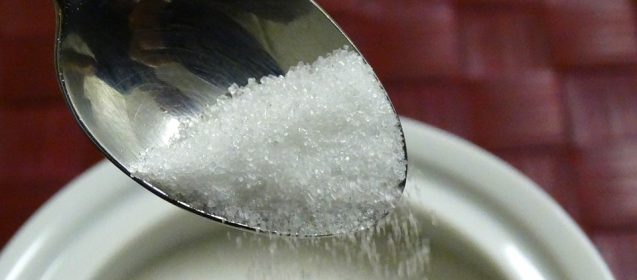

 An interesting study in the Journal of the American Geriatrics Society showed that diet soda adds inches to your waist if you’re a senior citizen. It used information from the San Antonio Longitudinal Study on Aging that followed 749 subjects of both Mexican-American and European-American heritage for 12 years. The study started in 1992 and ended in 2004. The findings were amazing and not at all what you might expect. Those who drank diet soda had waist measurements that were three times as large as the subjects who didn’t. Men fared worse than women. The larger the body mass, the bigger the increase was.
An interesting study in the Journal of the American Geriatrics Society showed that diet soda adds inches to your waist if you’re a senior citizen. It used information from the San Antonio Longitudinal Study on Aging that followed 749 subjects of both Mexican-American and European-American heritage for 12 years. The study started in 1992 and ended in 2004. The findings were amazing and not at all what you might expect. Those who drank diet soda had waist measurements that were three times as large as the subjects who didn’t. Men fared worse than women. The larger the body mass, the bigger the increase was.
 If you want to change any part of your life, set smart goals and achieve them. That’s especially true for weight loss or fitness goals. Smart is actually an acronym for a goal setting strategy that outlines how to create the goals to ensure you create a map that’s specific enough to achieve them. Setting goals is important. It acts like a road map for a trip. You identify where you want to get and the route you’ll take to get there. It also identifies how long it will take to achieve the goal.
If you want to change any part of your life, set smart goals and achieve them. That’s especially true for weight loss or fitness goals. Smart is actually an acronym for a goal setting strategy that outlines how to create the goals to ensure you create a map that’s specific enough to achieve them. Setting goals is important. It acts like a road map for a trip. You identify where you want to get and the route you’ll take to get there. It also identifies how long it will take to achieve the goal.
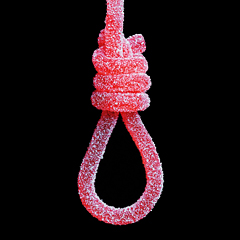 Is sugar ruining your health? The answer lies in how much sugar you eat and in what form. Do you eat processed foods? Are soft drinks the main way you hydrate? Is a candy bar your favorite mid afternoon snack? Some sugar is healthy. Lactose, sugar from milk products can be healthy. Fructose, the sugar from fruit also can be healthy. It’s only healthy when it comes in its natural container, fruit. Unfortunately, manufacturers have found a way to produce HFCH—high fructose corn syrup—and that it’s an inexpensive way to add sweetness and flavor to the foods they sell, so now it’s in everything. That means that the average American is loaded with sugar and that excess is what affects your health.
Is sugar ruining your health? The answer lies in how much sugar you eat and in what form. Do you eat processed foods? Are soft drinks the main way you hydrate? Is a candy bar your favorite mid afternoon snack? Some sugar is healthy. Lactose, sugar from milk products can be healthy. Fructose, the sugar from fruit also can be healthy. It’s only healthy when it comes in its natural container, fruit. Unfortunately, manufacturers have found a way to produce HFCH—high fructose corn syrup—and that it’s an inexpensive way to add sweetness and flavor to the foods they sell, so now it’s in everything. That means that the average American is loaded with sugar and that excess is what affects your health.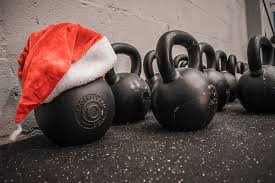



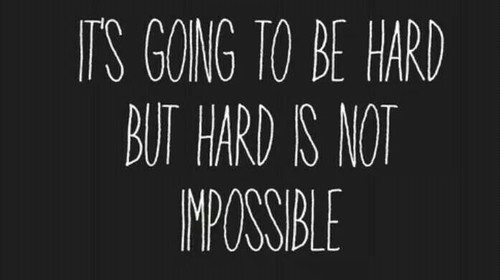
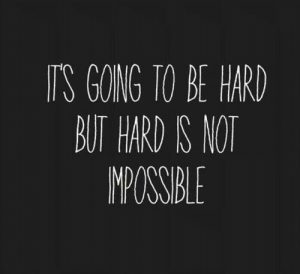 If you’re grossly out of shape or overweight, it may seem like too big of a goal to tackle. You must remember, it always seems impossible until it’s done. It can be done taking it one step at a time, which is why you need to break the goal down to mini goals that are not only less intimidating, but get faster results. You have to focus on smaller steps. Babies don’t just jump up and run across the room. They first crawl, then stand aided, next unaided and finally take a few steps. It takes babies 18 to 24 months to learn to run, yet they don’t give up because they never learned to feel defeated or overwhelmed.
If you’re grossly out of shape or overweight, it may seem like too big of a goal to tackle. You must remember, it always seems impossible until it’s done. It can be done taking it one step at a time, which is why you need to break the goal down to mini goals that are not only less intimidating, but get faster results. You have to focus on smaller steps. Babies don’t just jump up and run across the room. They first crawl, then stand aided, next unaided and finally take a few steps. It takes babies 18 to 24 months to learn to run, yet they don’t give up because they never learned to feel defeated or overwhelmed.

 I’m an avid people watcher. I enjoy watching how people interact and try to figure out how close they are and how genuine they are. I always have to laugh at men with paunches who immediately pull in their stomach when approached by an attractive woman. In one case, I swear the guy was going to pass out trying to keep that tummy sucked in for more than the minute or two conversation. That’s where getting fit is at its best. Had the man been fit, there would be no need to work that hard, because he already would have put in the work to flatten his abdomen. You have to suck it up so you don’t have to suck it in at other times.
I’m an avid people watcher. I enjoy watching how people interact and try to figure out how close they are and how genuine they are. I always have to laugh at men with paunches who immediately pull in their stomach when approached by an attractive woman. In one case, I swear the guy was going to pass out trying to keep that tummy sucked in for more than the minute or two conversation. That’s where getting fit is at its best. Had the man been fit, there would be no need to work that hard, because he already would have put in the work to flatten his abdomen. You have to suck it up so you don’t have to suck it in at other times.
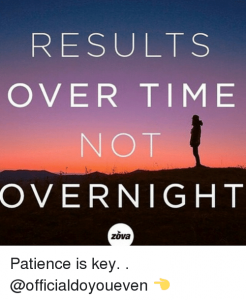 Whether you’re painting a room, growing a garden or honing your body to perfection, it’s easy to want to rush the final outcome, but it all takes time. That’s especially true when you want to sculpt your body toward the perfect you. You have to remember, results happen over time not overnight. However, there are other ways to mark improvement and change than just the final product. These will keep you motivated until you do lose the 30 pounds, replace fat with muscle or achieve whatever your final goal is.
Whether you’re painting a room, growing a garden or honing your body to perfection, it’s easy to want to rush the final outcome, but it all takes time. That’s especially true when you want to sculpt your body toward the perfect you. You have to remember, results happen over time not overnight. However, there are other ways to mark improvement and change than just the final product. These will keep you motivated until you do lose the 30 pounds, replace fat with muscle or achieve whatever your final goal is.